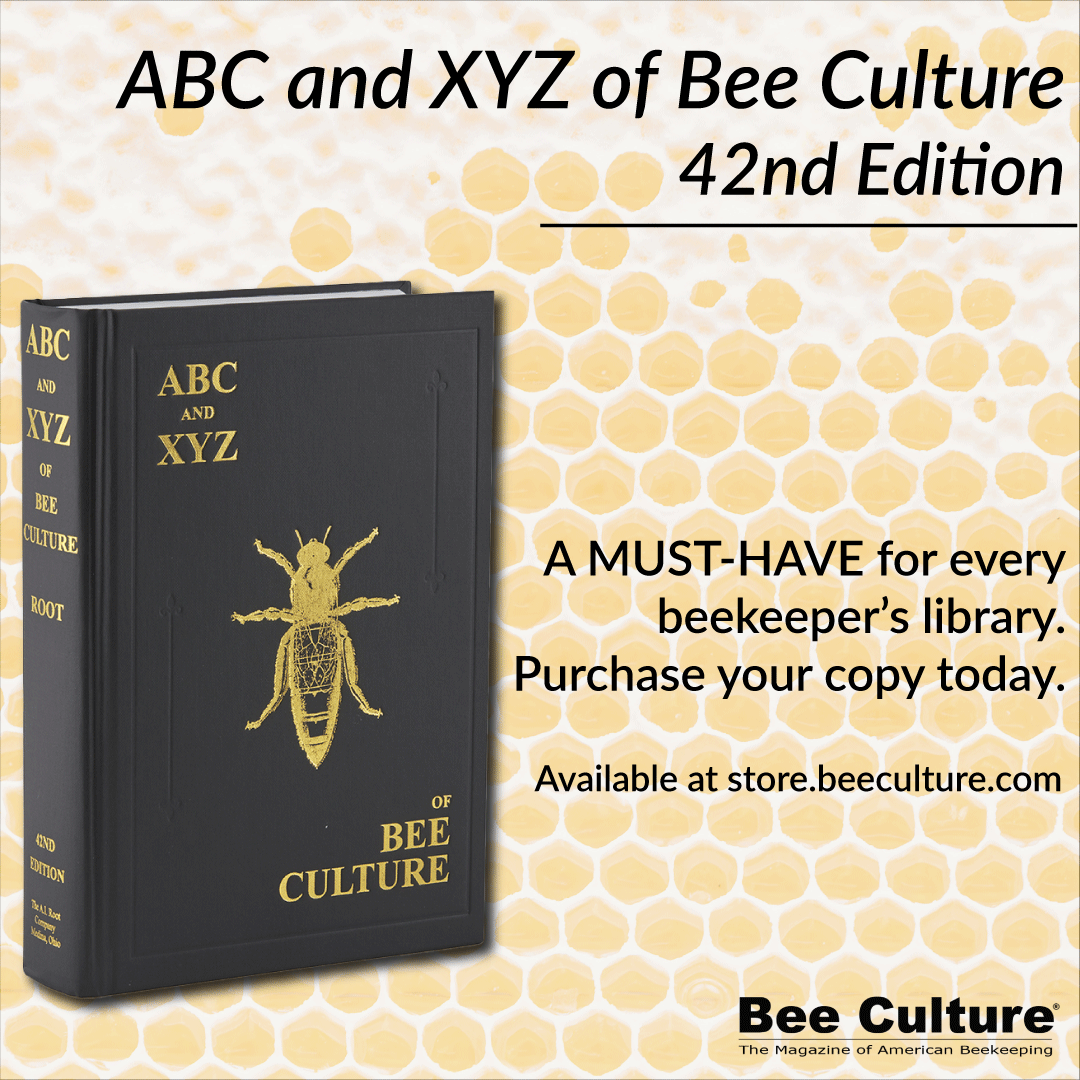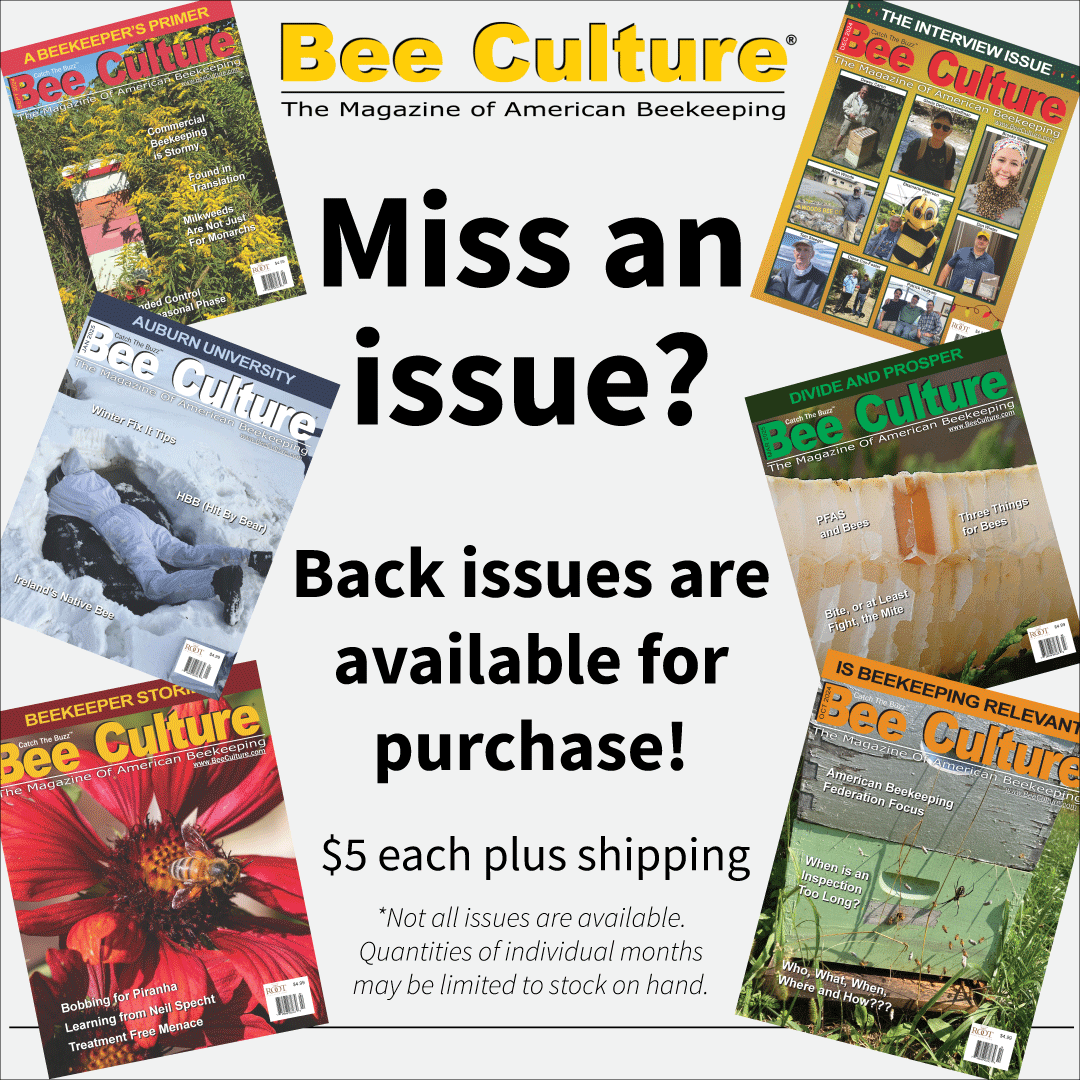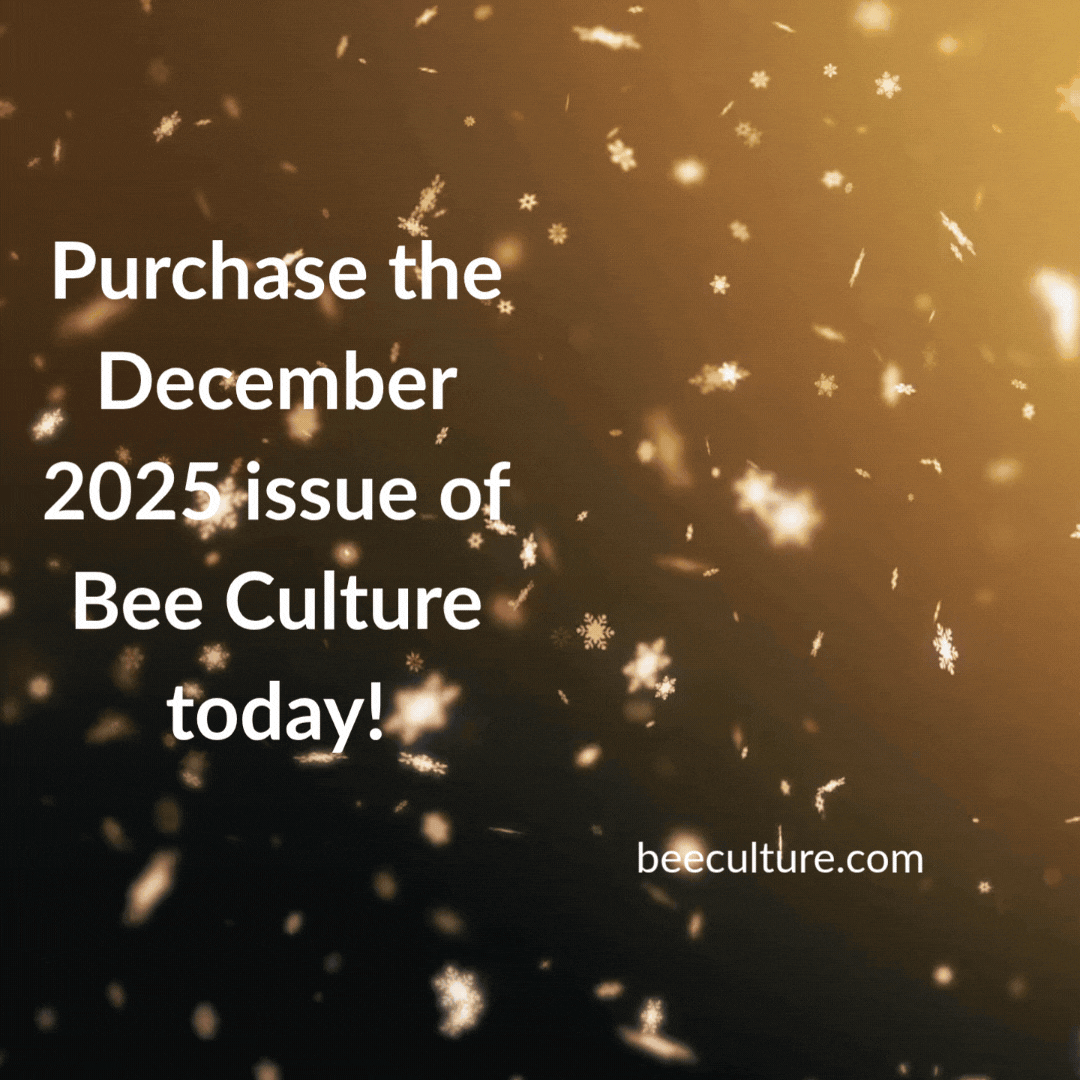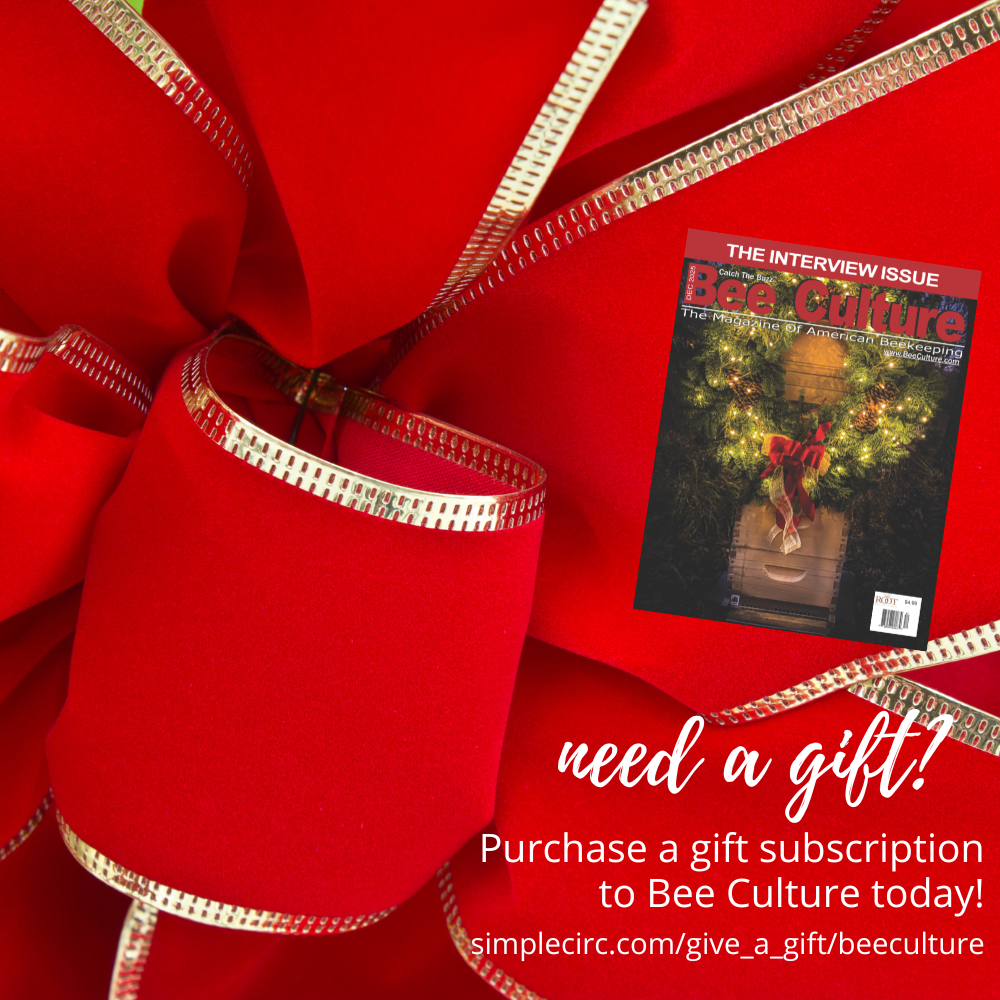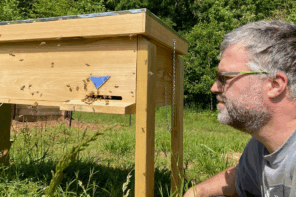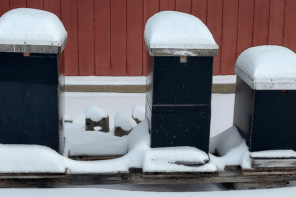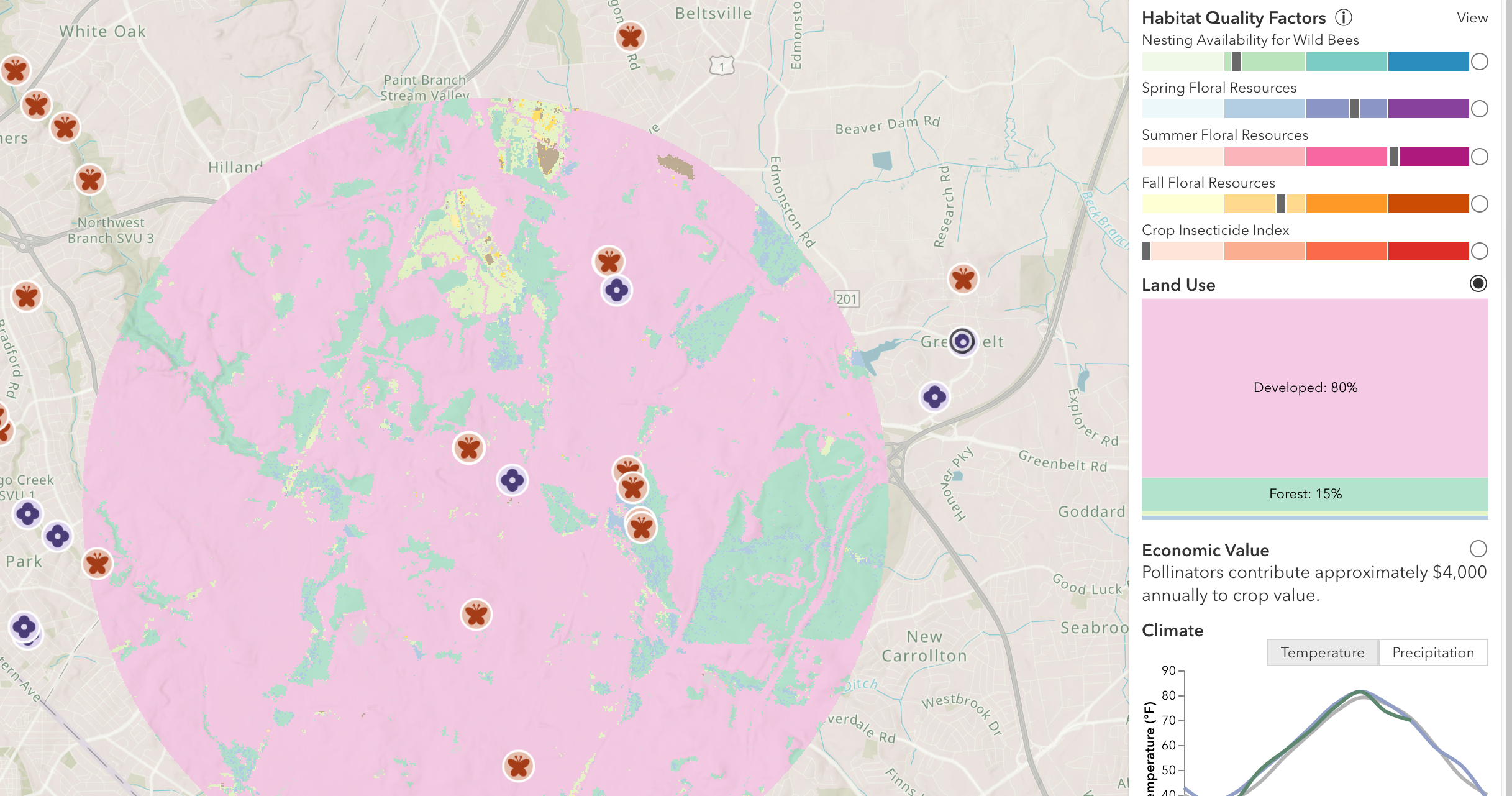Honey Tasting Journal. Produced by the American Honey Tasting Society. $20.00. Soft cover, color covers, black and white inside.
The American Honey Tasting Society has come out with a Honey Tasting Journal that’s used to keep records of the components of each honey sample you taste, so your records are consistent and easy to compare. It’s a comfortable-to-use 5” x 7”, with 100 pages used to take and record notes for each honey sample you taste. Each page has a section to enter a honey’s components including origin, visual aspects, notes on aroma, flavor and texture. There’s also a list of possible defects the sample may have had. The inside front cover has good instructions on evaluating each of these components.
The inside back cover has a very detailed honey and aroma chart covering the flavors including fruit, a decidedly interesting flavor called warm, then fresh, vegetal, animal, woody, chemical and spoiled. It is, essentially, the Honey Tasting Wheel redrawn to fit a rectangle page.
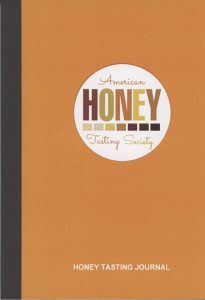
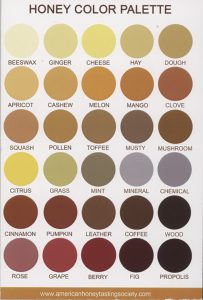
On the back cover is the honey color palette, identifying 30 individual colors you can assign to the honey sample you are tasting.
This Honey Tasting Journal is a must have for beekeepers and honey tasters who want to keep good, consistent records. Wholesale inquiries welcome! Bee clubs welcome! International shipping available! Email: AHTS.USA@gmail.com. Individual purchases of this Journal can be made at https://www.americanhoneytastingsociety.com/product-page/honey-tasting-journal
Kim Flottum
Growing Planet Media
The Lockdown Pallet Hive. Jonathan Powel. Published by Northern Bee Books. ISBN 978-1-914934=14-8. 6.5” x 9”, soft cover, color throughout, 20 pgs., $14.87.
The Lockdown part of this title is a result of what the author had to do while producing this book during the covid pandemic in the UK. His original intent was to simply show how to build this unique hive using parts of two wooden pallets.
The pallet hive is designed to replicate a honey bee nesting cavity in a tree. It is tall, narrow, has rough, thick insulating walls and a permanent top and bottom fastened with bolts, with the top covered in rubber for weathering. The cavity is shaped as an octagon. There is some flexibility built into the design to accommodate different pallet dimensions, and these are pointed out in the directions.

There are good photos for every step of the construction, and the written instructions are easily followed if you have basic woodworking skills and tools. When complete the pallet hive can be attached to a tree as high as reasonable, but consider having to remove to repair or replace it. Support can be provided by existing branches or ratchet straps and be used around the hive and the tree trunk providing the tree is protected from them cutting into the bark.
The author is a trustee of the Natural Bee Keeping Trust and a trained Zeidler tree beekeeper. He says, “This hive is not for honey harvest – it’s for the bees and our joint future together”. That’s a pretty admirable attitude I think.
Kim Flottum
Growing Planet Media
Beyond Honey. Tierney Monahan. Published by New Degree Press. ISBN 978-1-63730=451-8. Paper back. 8.5” x 11”, 104 pgs. $15.99.
This book will not teach you how to keep bees in a new, different or natural way. It is not a how-to book. Rather, it focuses on how you and I share the world we live in with honey bees. It has three sections explaining how this works.
Section one examines our common home, and looks at bees as teachers, shares a bit of bee biology and what we have in common, and what we don’t have in common. It also examines the problems bees are having – and how we are interdependent, we provide forage, they provide pollination. It looks at the issues of climate change, pesticides, the pest and pathogens bees suffer from and that the world does not need more honey, rather more people to look out for the bees.
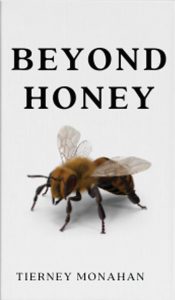
And then comes part two. This examines in some detail how bees are helping us in other ways. The many programs of teaching people in prison about bees and how to keep them so they have something to do when they are released. There are several programs examined here. Of course there are inner urban areas that bees can be kept in, and one company making and selling honey bee derived products to inner city beekeepers. The difference is that those doing the making and selling are on the edge, and this opportunity gives them an employment history and a skill set to use later, along with skills in working together and commitment.
Part three looks at the rest of the world and how it is working with bees. The UN has a honey bee program, and from the UK, Bees For Development is working around the globe with people, training to become beekeepers, finding dollars for donated equipment, teaching locals peoples to better support their families, without having to have land or lots of money. And then there are the Bee Cities, and Bee Campuses, which work with honey bees, and local, native bees, providing safety, habitat and forage.
There are more ways that bees and people share the world discussed here. But the value of this book is that you can now share even more with the people you know, the community you live in and the planet we inhabit. This isn’t a book about beekeeping, it’s a book about why we should be keeping bees.
Kim Flottum
Growing Planet Media
 Crop Pollination by Bees, Vol. 1., Evolution, Ecology, Conservation and Management. 2nd Edition. Keith Delaplane. Published by CABI International, Wallingford, UK. ISBN 9781766393494. Soft cover, 174 pgs., 7.5” x 9.5”, color throughout. $67.50. This is an update to the Edition published in 2000, with Dan Mayer.
Crop Pollination by Bees, Vol. 1., Evolution, Ecology, Conservation and Management. 2nd Edition. Keith Delaplane. Published by CABI International, Wallingford, UK. ISBN 9781766393494. Soft cover, 174 pgs., 7.5” x 9.5”, color throughout. $67.50. This is an update to the Edition published in 2000, with Dan Mayer.
Dr. Delaplane has updated the insect pollination work he and Dr. Dan Mayer did just over two decades ago. This is, without doubt, a very comprehensive and detailed look at, essentially, the entire aspect of the relationship between bees and plants. All of the bees, and all of the plants that bees pollinate. Moreover, it brings into play the role that humans play in this seed and food producing activity.
There are 11 chapters in this text book for both scientists and the rest of us, with a large selection of photos and drawings of bees, flowers, equipment and more to illustrate the content of each chapter. There are also many charts and graphs that detail what may appear to be very different aspects of these diverse individuals together.
Evolution of both plants and bees is explained and described, as is the basic biology of bees. And that would be all of the bees that are involved in the world of pollinating plants. Eleven families of bees are examined, showing both physical and nesting behaviors and how they play a role in, and what flowers they pollinate. Just over 70 species of crop plants have their flowering systems examined and what kind of pollination they need along with their dependance on the pollinators used. This gives good background with working with growers and understanding how a crop is produced.
Following this are estimates of the value of pollinators for various crops on a global scale. What insects for what crops in what country, summed up nicely. This is followed by estimates of the global bee population changes occurring over time, and the reasons for those changes. Some declining, some not changing, some increasing, which includes a quick look at restoring bee habitats.
There is an excellent 20 page section on managing honey bees for pollination, including global numbers of managed colonies for the 20 most populous countries. The US is number 10 on this list. India is number one with 13.04 million colonies, US has 2.8 million colonies and number 20 is Serbia with 0.9 million colonies. The remainder of this chapter covers the beekeeping basics that commercial pollinators will find useful that includes moving hives, timing, spacing, and competing bloom, among other topics.
Then there is a long, close look at managing bumblebees, including biology, queen breeding, raising colonies and using them for pollination. This is followed by looking at managed solitary bees (think alfalfa leaf cutters), but also Alkalis and orchard masons, too.
The author finishes with chapters on using wild bees and stingless bees in an operation and what would be needed for habitat and protection.
If you are already a commercial pollinator, want to become one, or simply want to know much more about the art, science and business of pollination with bees, this book should be on your shelf, within easy reach.
Kim Flottum
Growing Planet Media

